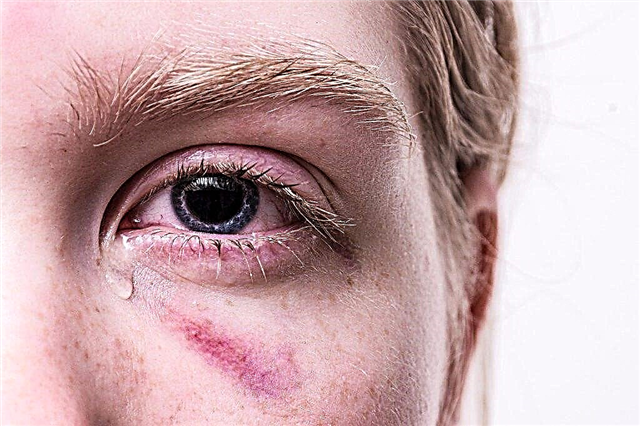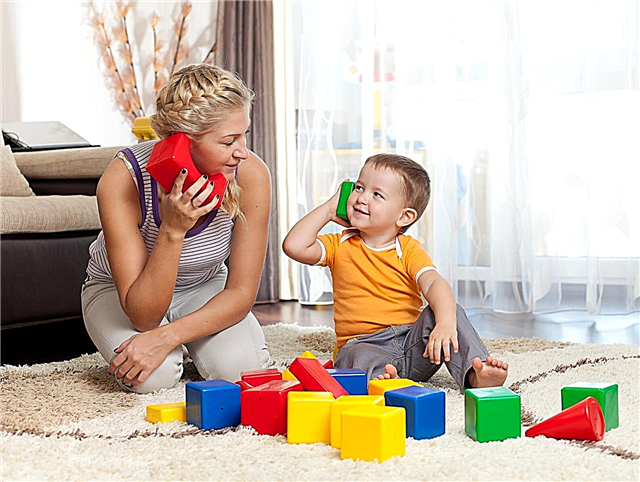School years ... terrible. Yes, that's right, because not all adults remember school with a kind word, but their neighbors on the desk with a nostalgic smile. And the problem is not the lack of textbooks or boring lectures, but the cruelty of classmates. Bullying at school is a widespread phenomenon and, alas, difficult to eradicate. But this does not mean that there is no need to talk about him, and a child who has been bullied does not need to be saved.
Bullying, or more familiar to us, the concept of "bullying" did not arise today. Children's aggressiveness and cruelty towards peers have been described in literature and cinema. It is enough just to remember the popular Soviet film "Scarecrow". Now people are talking about bullying more often and more openly, but the problem is still acute.
What are the causes and symptoms of school bullying? What to do if a child is bullied at school? How can bullying be prevented or mitigated? Will we tell you about all this and much more in today's article?
What is bullying
Bullying is the systematic harassment of one of the group members (in our case, the school class) by other members of the group. The persecution is aggressive in nature, usually several people are involved in it, which is why the victim cannot fight back the offenders.
Based on this definition, there are 3 main components of bullying.
- Violence (any plan - physical, psychological, emotional).
- Group violence (either the whole class or a separate group acts).
- Systematic character, that is, aggression is manifested not once, but regularly.
You need to keep these three components in mind to distinguish bullying in school from other similar but not similar situations.
Do not confuse school bullying and unpopularity. Yes, an unpopular child is lonely, he is not accepted into the team, they are not friends with him, he does not chat with classmates during recess. He is offended, unpleasant, he feels sadness and annoyance. But not fear, as is the case with bullying. With systematic bullying, he cannot be safe, and the fear of bullying is his only companion.
It is also worth distinguishing between school bullying and conflicts. Today children can quarrel or even fight, and tomorrow they will ride a slide together or kick a ball across the field. Such quarrels are inevitable, and the child learns in them to stand up for himself, to throw out aggression, to defend his rights. But the main thing is that in conflicts the forces of both participants are equal (or approximately equal), and one or another side can act as the aggressor. In the case of bullying, the roles do not change: the buller always attacks, and the victim suffers.
Types of bullying
School bullying is a versatile phenomenon, as victim bullying can be very different. Let's consider the main forms of such behavior.
- Physical violence. Buller affects his victim in the physical planets - it kicks, pushes, pulling hair. In especially severe cases, beatings. This bullying is easiest to stop because both parents and teachers immediately notice the consequences.
- Psychological abuse. A less obvious, albeit more common form of bullying. Aggression is expressed here in humiliating comments, ridicule, threats. Emotional "rapists" give the victim an offensive nickname, stigmatize him: "fat ass", "bum", etc.
- Economic violence. Everything is simple here. The student is constantly extorted pocket money, they can simply take away valuable things: smartphones, clothes, other items. Sometimes Bullers spoil clothes on purpose (tear, throw away, stain in paint, etc.), backpacks, notebooks, etc.
- Cyberbullying. Several years ago, a special type of school bullying - cyberbullying - emerged and became widespread. It involves pressure on the victim through communication. Aggressors spread defamatory information on social networks, threaten in instant messengers and by e-mail, shoot and distribute videos with bullying.
How common is bullying
According to the results of surveys conducted by experts from Europe, every second child of school age became victims of bullying to one degree or another. Just imagine this figure! If we extrapolate these results to the domestic educational system, then we can assume that hundreds of thousands of children at this moment suffer from attacks from aggressive classmates.
These little victims of adult inattention experience fear, shame, and other negative emotions every minute. Some people feel so bad that sometimes they even think about suicide. Is this normal? Of course not.
Why bullying at school is dangerous

It is not for nothing that the word “persecution” is related to the verb “poison”. After all, the results of such a phenomenon can be the most serious. And at the same time, oddly enough, all the participants in bullying acquire a negative experience: buller, victim and witnesses. Aggressive child turns into a destructive person, witnesses live with guilt. But the object of persecution suffers most of all and receives the most serious injuries.
Among the most common consequences for a victim of bullying are the following problems.
- Difficulty learning, poor grades.
- Skipping lessons because there is no desire to go to school.
- Psychosomatics, that is, diseases caused by prolonged stress.
- Lowered self-esteem, inability to believe in one's own strength. Some children blame themselves for what happens to them.
- Anxiety and depressive mental disorders, up to the most severe forms.
- Neurotic conditions, problems with being in society. Even as an adult, the victim of bullying tries to avoid companies and collectives.
- Physical injury and even injury.
In severe cases, emotionally unstable teens may try to commit suicide. According to psychological studies, school bullying victims have suicidal thoughts and even behavior 5 times more often than their more prosperous peers. This is a huge figure.
Bullying reasons

As we have already noted, bullying is a collective phenomenon, which means that one of the prerequisites for this phenomenon lies in the group. The school class is formed "from above": students do not choose who they will be with for a long period of time. For example, a yard company is formed according to completely different principles.
As in any other collective, a hierarchy begins to form in the class: from “stars” to outsiders. And at a certain moment, someone wants to establish their power, uniting friends with the same interests into their team. And this very interest may well become persecution. The offenders receive positive emotions, they realize themselves better and more successfully. And they want to experience this feeling over and over again.
Consequently, bullying at school is a kind of collective dynamic. But then why isn't this practice thriving in all classes? The personality of the teacher plays a huge role here. If he condones the bullying or even approves of it, then the problem is inevitable. And on the contrary: when the teacher creates a favorable psychological climate in the group, bullying is impossible.
Who can become the target of persecution? Any child who is somehow different from other children, and it doesn't matter which way. They can mock with equal force both an excellent student and a poor student; both the rich and the poor; both over thick and over thin. Most often, children suffer, characterized by isolation, shyness, self-doubt.
How to understand that a child is being bullied at school
Teenagers often prefer to remain silent about their problems: they think that the intervention of parents or teachers will only increase the conflict. Another reason for silence is the fear that adults will not understand or condemn (they say, it's already big, figure it out yourself).
Still, there are a number of signs that may indicate bullying from classmates.

- Physical injuries that the teenager cannot explain why. Either his explanations seem far-fetched.
- Changes in character, behavior.
- Sleep problems. The child is tormented by nightmares, he cannot sleep.
- His things are “lost”: telephones, headphones, gold earrings, jackets. Or these things "suddenly" break, tear, get dirty.
- The teenager comes up with all sorts of excuses, just not to go to school. Either his stomach ached or his temperature rose. By the way, it is possible that abdominal pains are really present, since this is how psychosomatics can manifest itself.
- Eating behavior changes. Teenagers, especially girls, stop eating. This often happens when a child is teased for being overweight.
- Academic performance deteriorates, teachers complain that the child has lost interest in learning. The corresponding entries appear in the diary.
- Sudden quarrels with friends, classmates. The teenager does not go out after school, does not call friends.
- Any behavior deviating from the previous norm: scandals, auto-aggression, running away from home, tantrums.
A child is bullied at school: what to do
There is no single correct answer to the question of how to deal with bullying. But the most important thing is obvious - it is necessary to declare the problem, to voice it, to call the bullying mockery. Then the aggressors and witnesses will understand that this is not a cool get-together, but a shameful act. This should be done by the teacher or director.
Psychologists are convinced that it is useless to solve the situation in the “victim - buller” plane, since the whole class is involved in this process in one way or another. Therefore, the main task of the teacher and school psychologist is to create a normal atmosphere in the team. But all this is possible if teachers and management meet the requests of parents.
If bullying - psychological or physical - does not stop, you need to act differently.
Coping with psychological (other) bullying
Proceed as follows.
- Contact the school directorate. Be sure to attach a written statement to the appeal. List all the facts that indicate bullying, the consequences of such bullying. According to the law, the director must respond to the application within a month.
- Put forward your suggestions. Perhaps you have an opinion on how you can solve the problem. Bring it forward, discuss it with psychologists, teachers. Involve outsiders - perhaps a specialist from a private institution.
- Please contact your higher authorities. If the school administration does not respond, write a statement to Gorono or Rayono, Rosobrnadzor, the Children's Ombudsman in your region. Officials should respond to such appeals within a month.
- Think about the public. If that doesn't help, then ring all the bells. Write posts on social networks, seek help from popular information sites, newspapers and channels. Alternatively, contact organizations dealing with a similar problem.
Fight against physical bullying
It is very dangerous. You need to do the following.
- Do not let your child go to school if he came from there with serious injuries.
- Be sure to apply for a medical certificate. The doctor will remove the beatings, give a certificate. This is proof! They can also be threatened messages, videos with beatings.
- Contact the police and prosecutor's office.
- Write a statement to the name of the education official in your city or region.
- Reach out to the public. These can be non-profit organizations, the press, deputies, the ombudsman.
How to help a child
But the most important thing is to help the target. How to do it?

- Show that you are on the side of the teenager. You cannot tell him that it will pass, that he is to blame, they say, do not pay attention, etc. The child is looking for your protection and support. You are required to provide them.
- See a psychologist. A child's self-esteem inevitably suffers due to bullying, the understanding of how to communicate with peers in society is disturbed. We need qualified help from a psychologist.
- Raise your child's self-esteem. Of course, this is not an easy process, complex and lengthy. But without this, it will be impossible to return the teenager to normal life. What can be done? Offer a hobby, sports section. That is, the occupation where he can see his own significance.
Don't expect the situation to improve without your intervention. Of course, at some point, the aggressors may get tired of bullying your child and they will switch to another victim (which is also terrible). But by this time, the problem will have gone too far, and children's self-esteem will fall below the lower limit.
Whether to transfer the child to another school
It is generally accepted that you should not transfer a bullying teenager to another educational institution. They say that if he acts as a victim here, then the same thing awaits him in the new place. This is the wrong point of view. We said above that absolutely any child can become the object of bullying, and the situation is worsened by the teacher's non-intervention.
If the child has the opportunity to choose a team, teacher or school, then such a transition can potentially turn the tide of history. It is all the more necessary to change the educational institution if the teachers turn a blind eye to the problem, or even blame the teenager for the current situation.
Conclusion
Bullying at school is a phenomenon that has always been present and, unfortunately and with a high degree of probability, will continue to be present in social life. The task of parents is to support their child, to do everything possible to change the situation. If all else fails, opt for a different school.



